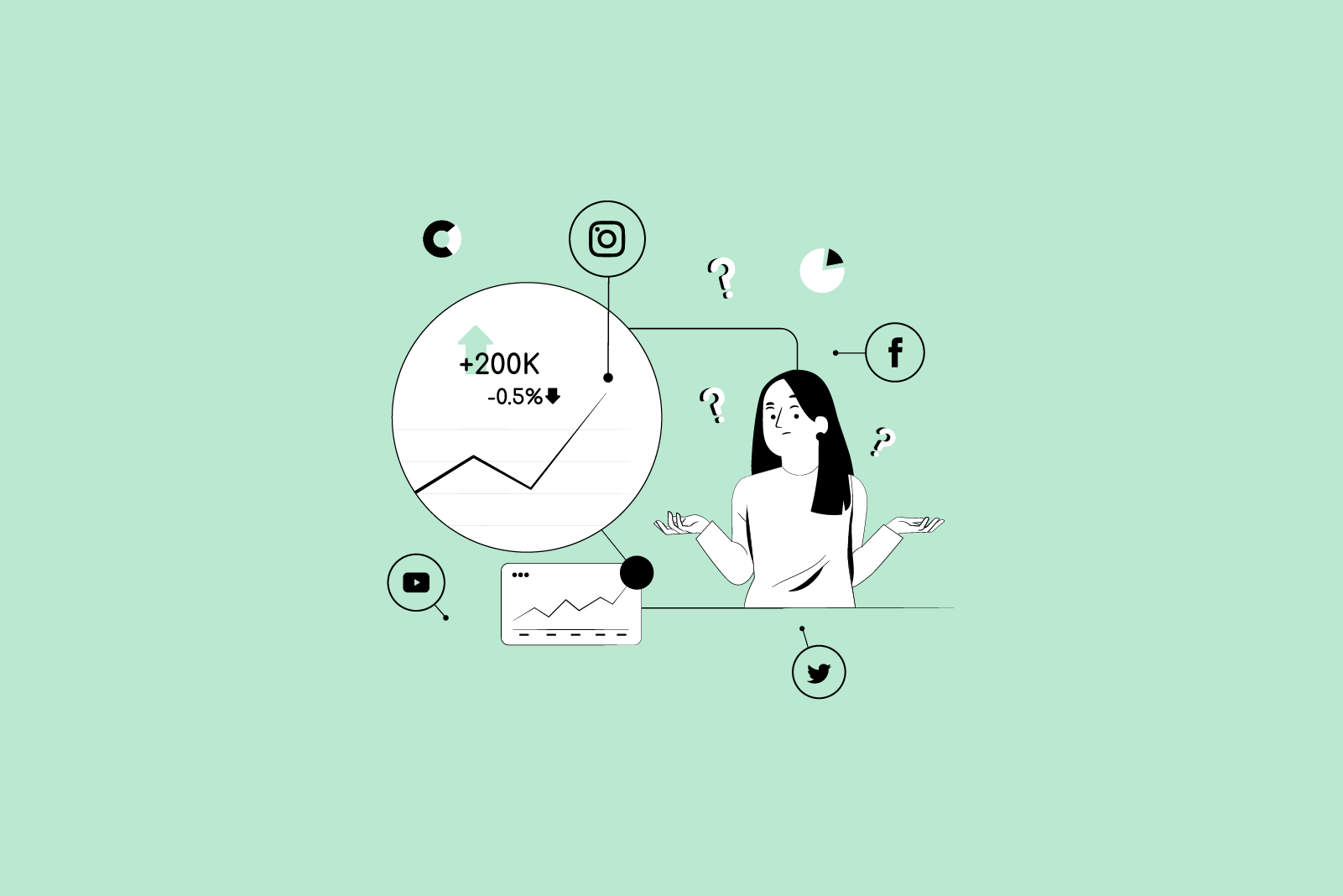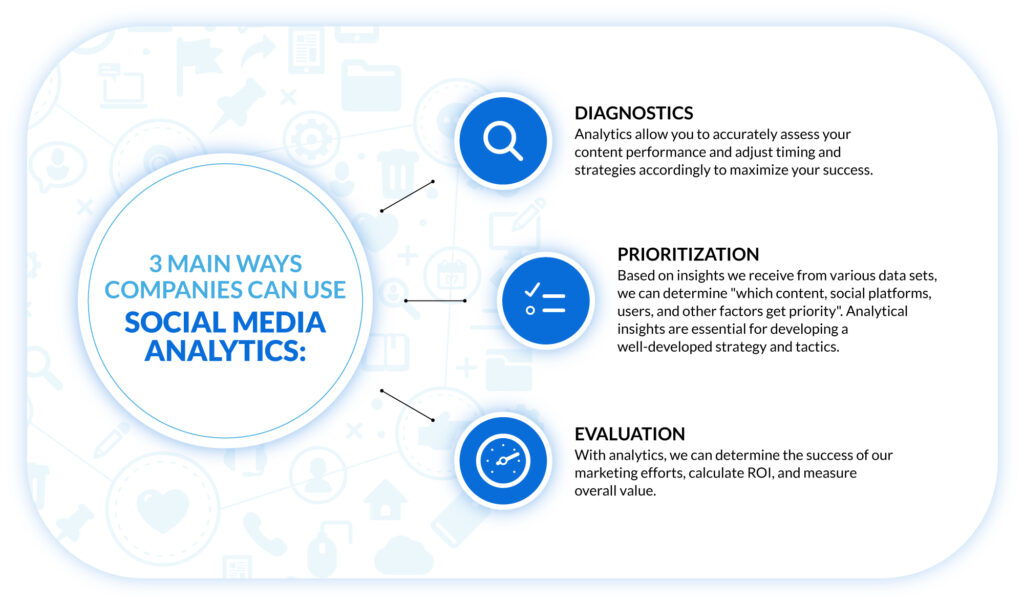
Table of Contents
POV: you are a beginner in social media analytics and It can be overwhelming to learn a new skill, but understanding the basics of social media analytics can help. Start by reading up on the basics and exploring existing analytics tools to get a better understanding of how it works.
It doesn’t matter what industry you’re in, your customers are using social media. One is unlikely to be without at least one social media account, whether it be on Facebook, Instagram, or even Quora.
As a result, the amount of big data produced by social media platforms increases as more people sign up for them. By gaining access to this information, businesses can make better decisions and target their marketing campaigns. All that data is overwhelming, but how do they analyze it? The way they do this is through social media analytics.
why social media analytics is it so crucial?
The sad reality is that many businesses are jumping into the social media sphere before they have the training, knowledge, and insights necessary to make it worthwhile. Understanding the importance of analyzing and measuring social media strategies is necessary to make them effective.
In the absence of such a strategy, businesses risk just playing a guessing game – blindly uploading content to various platforms and hoping for some vague idea of how it will work.
Thus, it is extremely helpful to understand social media analytics. Insights gained from these valuable data sets help you to convey a clear sense of purpose and focus to your strategies and tactics.
Let’s go into more detail …
An overview of social media analytics use case
In terms of making or breaking a brand, social media’s power cannot be overstated. In the age of instantaneous communication, news of a great product or a terrible customer experience can spread like wildfire within seconds. Customers are no longer restricted to their private homes or immediate circles; they can now hold organizations accountable for their promises and share their experiences with the world. Staying one step ahead of the competition means staying informed about how their brand is perceived on social media.
Through social media analytics, everybody can use these experiences to:
Create innovative solutions:
The use of social media analytics can play a significant role in driving product/service innovation. It is common for people to complain about products and services on social media. Without spending a lot of money on market research, analytics can provide valuable information about customer needs. For example, you should check social media for customer feedback when launching a new product. When it comes to your next product launch, if most people point out a missing feature or improvement, it is worth including it.
Measurement and proof of ROI and marketing effectiveness
Your social media marketing strategy requires time, money, and effort. Consequently, you’d like to know how well your efforts are working.
The question is, how do you know if it’s working for you? In what ways can you translate comments and likes into social media ROI (return on investment)?
To achieve your goals, you must measure the success of your social media efforts. You can determine what’s working and what’s not and make changes if necessary. This can be accomplished through social media analysis.
In other words, social media analysis helps you learn from your social media results and implement these findings to optimize and improve your overall strategy. Aside from being useful, it will also help you determine how much more effort and time you should devote to certain areas.
Keeping up with market trends and competitors
It’s challenging to stay on top of marketing news and trends when there aren’t enough hours in the day. You’ve got a business to run and lots to take care of. Monitoring social media will help you stay ahead of the curve at all times, whether it is just one hashtag trending or a variety of topics trending on social media. The result would be amazing if the social media tools came in the middle.
Social media tools can help save time by filtering out what is important and what is not. For example, they can provide a summary of the most popular topics being discussed on any platform, or tell you what keywords are being used most often. This way, you can easily get an overview of what is happening and which trends are the most important to follow.
Business value of social data analytics:
Product Marketing: Brand awareness, Brand management and word of the mouth marketing.
Development product
Product-design

Definitions: Social Media Analytics vs Same-Tasking Services
• Social Media Intelligence
• Social Media Listening
• Social Media Monitoring
Social media intelligence:
Through social media intelligence, brands can make better decisions based on customer insights.
The goal of social media intelligence isn’t just to track vanity metrics. It’s about turning online data into actionable knowledge.
In addition to tracking equity in granular detail, detecting emerging trends, and discovering customer tribes, these techniques can help brands better understand their customers.
Social media monitoring
In social monitoring, you follow social audiences to be alerted to spikes in activity that might represent a potential opportunity or a disaster. By monitoring social media, you can quickly identify trends or changes in people’s opinions and reactions to your brand or product. This allows you to adjust your strategy and take advantage of opportunities or mitigate potential disasters promptly.
Social media listening:
By conducting social media listening, you can gain insights into what is happening not just around your brand, but throughout your industry. Listening to social media is a crucial element of social media intelligence, but when isolated, it doesn’t offer the proper tools for separating, categorizing, or understanding data.
The difference:
The difference between Social Media Monitoring, Listening and Intelligence lies in the scope of each activity, and the level of insight they can provide. Social Media Monitoring focuses on tracking conversations, while Social Media Listening involves actively tracking conversations to gain insights. Finally, Social Media Intelligence is more focused on collecting and analyzing data from social media networks and other sources, to gain a deeper understanding of customer sentiment, competitor strategies, and industry trends.
Let us look at the critical and vital areas of using social media analytics in your marketing strategy.
Key areas to use social media analytics (Segments of social media analysis)
• Audience analytics
• Performance analytics
• Competitive analytics
• Paid social media analytics
• Influencer Analytics
• Sentiment analysis
Here is a brief description of each segment
Audience analytics
Audience analysis is when you research some stuff about a group like their interests, preferences, demographics, location, etc.
By understanding the demographic makeup of the audience, businesses can better target the right people with the right message.
Performance analytics
Performance Analytics allows you to track, aggregate, and visualize key performance indicators over time rather than reporting on them at a particular point in time.
Performance analysis can help you:
• Drive performance
• Provide actionable insight
• Unlock value, measure, and accelerate performance with purpose-built metrics
• Focus teams on what they should prioritize
• Gain instant insights into current patterns and trends to make smarter decisions.
Competitive analytics
Competitors analysis refers to a method of evaluating how well your business and its products or services compare to those of competitors.
Your business can benefit from competitor analyses in the following ways:
• Assess your strengths and weaknesses.
• Take an in-depth look at your industry’s market.
• Identify growth opportunities for the future.
Paid social media analytics
In light of the amount of money spent on social media ads, it is extremely imperative for businesses to know how effective their social media campaigns are. When you don’t know what paid content will engage your audience, it’s easy to waste time and resources promoting content that doesn’t perform well. Therefore, investing in social media should be efficient and productive.
The following are some key performance indicators (KPIs) that should be tracked:
• Clicks:
Clicks are a metric that measures the number of users who click your social media ads. It represents a visitor who is likely to be interested in what you’re offering.
• click-through rate (CTR):
In social advertising, the click-through rate (CTR) measures how many people click to find out more or buy. Your CTR indicates how effective your social media ads are at attracting customers.
• Cost per engagement (CPM):
CPM stands for cost per engagement, where advertisers pay when users take a survey or sign up for a free trial.
• Campaign ROI:
An ROI shows how much value you generate from social media campaigns. In order to enhance returns as you move forward, you need to understand ROI to evaluate the overall effectiveness of your campaigns.
Influencer Analytics
Exactly what are influencer analytics?
Influencer analytics refer to the information you get from analyzing an influencer’s key performance indicators (KPIs). For example, by analyzing the engagement rates of several posts, you can determine what type of content is most engaging.
To overcome these impediments to scaling data analytics efforts, make sure you are adopting some of the new tools that are emerging to help. These tools deliver fast results, build the confidence of the front line, and automate the delivery of analytical insights to it in usable formats.
Social media sentiment analysis
Social media sentiment analysis describes sensitizing social media data by analyzing people’s feelings and opinions about a particular topic or product from social media data. An essential function of social media sentiment analysis is determining what users think of certain products and brands based on their emotional reactions. This can be accomplished by analyzing the words used in reviews, comments, and other posts.
For instance, if a comment on a brand’s page is a „Superb product“, sentiment analysis classifies it as positive.
How to track your key performance insights quickly and easily
Create a list of key performance metrics:
Start by identifying the key performance metrics that are most important to your business. This will depend on the industry you are in and the goals of your business. Common performance metrics include customer satisfaction, cost per acquisition, customer lifetime value, customer acquisition rate, customer retention rate, and revenue growth rate.
Set up tracking systems:
Once you have identified the key performance metrics that you want to track, you need to set up systems to track them. This might involve using analytics tools, customer relationship management (CRM) systems, or other data-tracking software.
Monitor data regularly:
To stay on top of the tracking data, you must monitor it regularly once the tracking systems have been set up. This will help you to identify trends, measure progress, and identify areas of improvement.
Analyze data:
Once you have the data, you need to analyze it to gain insights. This might involve using data visualization tools, running reports, or performing statistical analyses.
Take action:
Once you have identified areas of improvement, you need to take action to make changes. This might involve making changes to your products or services, changing your marketing strategies, or taking other steps to improve performance.

CoCo helps to analyze large amounts of data from social media platforms quickly and accurately. They can identify patterns, trends, and insights that can help businesses better understand their customers and make more informed decisions.